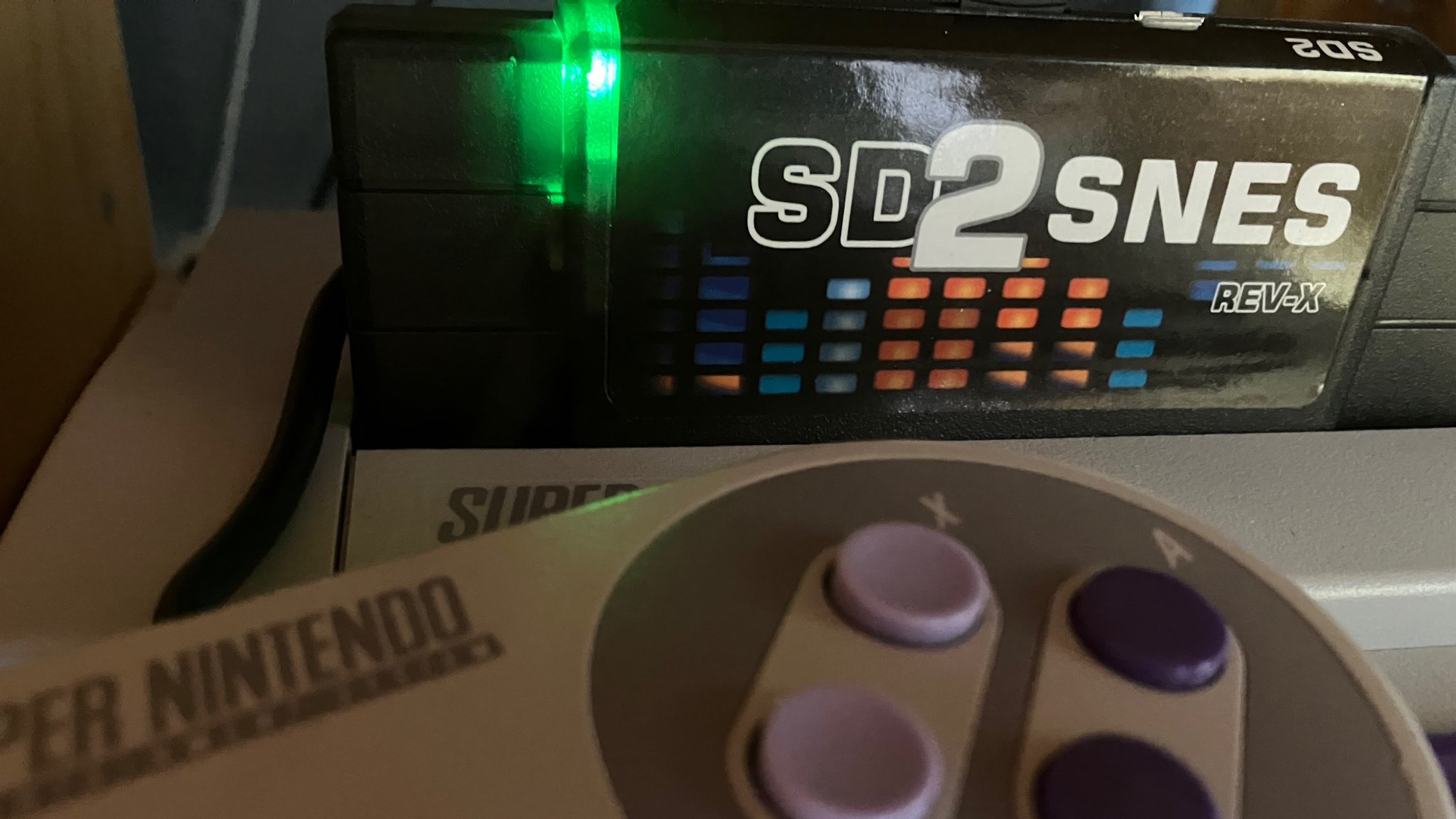

We may earn revenue from the products available on this page and participate in affiliate programs. Learn more ›
Retro gaming is trendy at the moment, and for most people that means emulators. Whether it’s playing Nintendo’s official emulated releases of old games on the Nintendo Switch or using emulators to play retro games on your phone, lots of people are using emulators to relive classics. Here’s the thing, though: No emulator feels quite as good as the real thing.
I can’t overstate how much better titles like Super Mario World feel on actual hardware. I’ll admit a lot of this is personal preference, but I recently acquired a Super Nintendo from a friend who had stored it in a closet since the ‘90s and the difference is as notable as it is intangible. There’s an immediacy—pressing a button instantly has an action—that I haven’t experienced in decades of emulating this same game, and I also think everything just looks better.
Flash carts offer a compromise. With these you can play a collection of ROMs on actual retro hardware. These modern devices are cartridges you can insert into retro consoles but offer an SD card slot for ROMs. You can browse the ROMs and launch any of them on actual hardware. There are flash cards available for any cartridge-based system you can think of, from the original Nintendo Entertainment System to the Sega Genesis all the way up to the Game Boy DS. They might be the best way to play classic games for most people, and also allow you to do something that was previously impossible: playing homebrew games and ROM hacks on original hardware.
Wait, is this legal?
Any conversation about video game ROMs needs to include some caveats. It is not legal to download copies of video games you do not legally own, at least in the United States. It is also technically possible to “rip” ROMs from cartridges you already own yourself, with specialized hardware, and that might be more legally defensible.
Ultimately, as with any conversation about retro gaming ROMs, you as the reader need to personally decide about your personal ethics and legal risks. We, for our part, are not going to offer links to any ROM files, and do not condone illegally downloading ROMs.
Why not just buy the games?
Retro games are expensive. Sure, sometimes you can get lucky and find a few at a garage sale, but that’s becoming less common. The economics here are simple: A growing number of people want to collect retro games and no company is producing new copies. This growing demand combined with a lack of new supply—combined with cartridges inevitably breaking down with time—has some extreme consequences. The Super Nintendo RPG Chrono Trigger, for example, sells for around $200, and that’s without the box or manual. The price will likely only go up over time.
Now, some people have enough disposable income—and the inclination—to collect games. You might not, though, and that’s where flash carts come in. They provide another way to play these classic games on original hardware. With time, as more of the original cartridges break down, they might be the only way of saving pieces of gaming history.
And honestly, there are reasons to want a flash cart even if you have an extensive collection of original carts. For one thing, you can play games without physically handling them, which could help them last longer. You can also switch between games without having to switch cartridges, which is convenient. And for portable consoles, such as the Game Boy, a flash cart is a way to carry your entire collection without taking up any physical space.
Homebrew and ROM hacks on original hardware
There’s another benefit to flash carts: You can play games that were never physically released for a given console.
If a retro game console exists you can be sure that homebrew and ROM hacks exist for it. “Homebrew” refers to games made by fans of a console for non-commercial reasons. Such games are widely and legally available online and generally are made with emulators in mind. With a flash cart, however, you can load homebrew on original hardware, something that otherwise wouldn’t be possible.
And then there are ROM hacks. There is a long history of hobbyists and hackers taking classic retro games and adding their own twist to them. For Super Mario World, for example, there are hundreds of fan-made hacks with unique levels, soundtracks, and graphics. Again, such titles are mostly made with emulators in mind, but flash carts allow you to play fan-made sequels to your favorite games on actual hardware.
Where do I find a flash cart?
You won’t find flash carts in brick and mortar stores—they’re a little too obscure for that. You can find them on online retailers, however, including Amazon and AliExpress. If you want the best quality you can also buy them directly from companies who make the cartridges, including Krikzz and Everdrive.
The actual cost of the flash carts can vary wildly, in part because many games in retro consoles had specialized chips embedded in the cartridge themselves. The more expensive carts, generally, are compatible with more games. You should research which games will work with which carts before purchasing.
This isn’t a small investment, granted—flash carts can run anywhere from $30 to a couple hundred dollars, depending on the console and the number of games that are supported. But given the ever-rising cost of used video games it’s nice to have a way to access all the classics, not to mention handle the classics you want a little less.
